These chewy, lemon and almond-scented cookies are made with little more than almond flour, egg whites and sugar, meaning they are naturally gluten-free!
A riff on my popular soft amaretti cookies, these almond flour crinkle cookies will spread a bit more in the oven, resulting in a lighter, chewier texture with crisp edges and eye-catching powdered sugar-coated crackly tops.
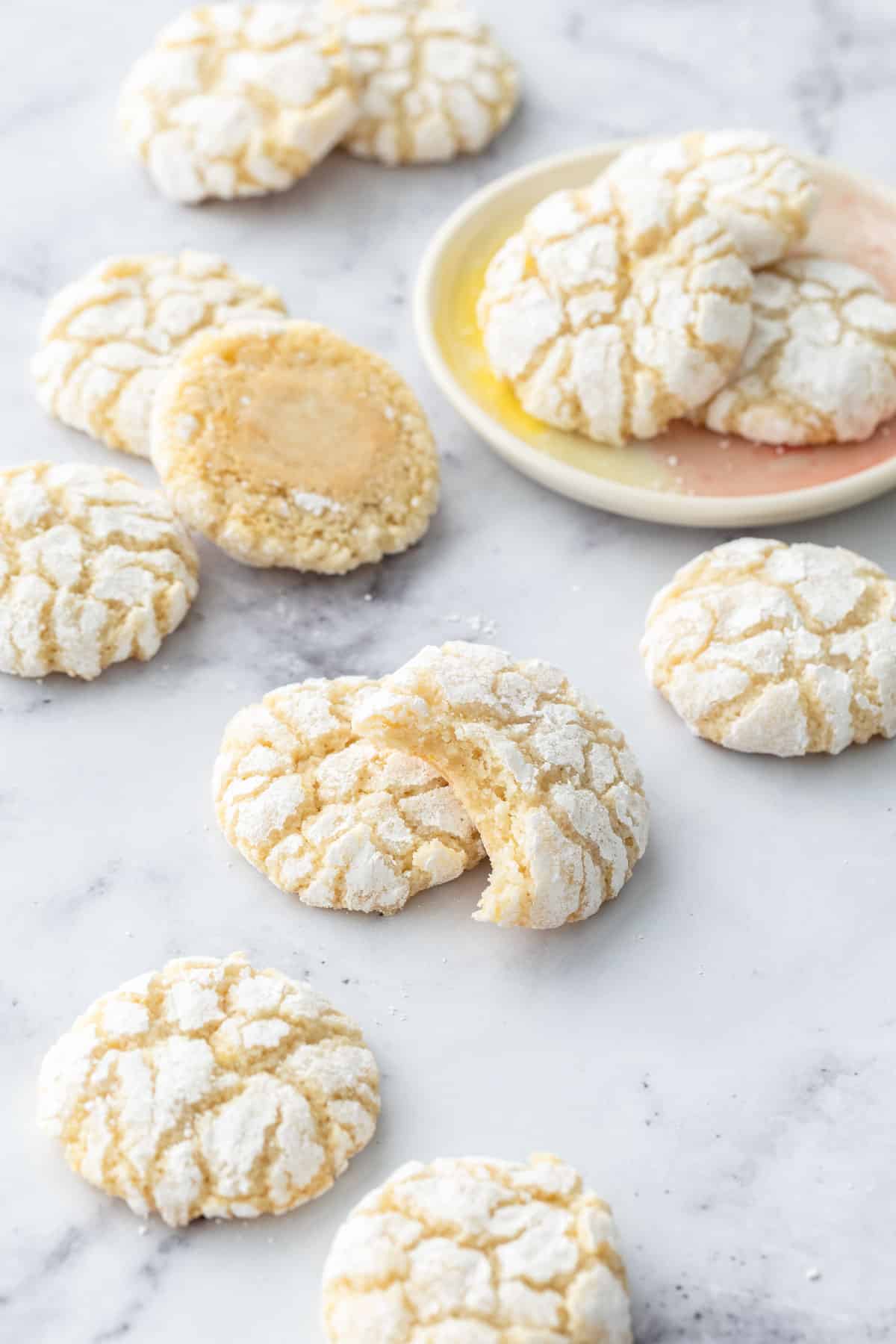

I’ve been wanting to do a lemon amaretti cookie recipe for sometime now.
Rather than just adapting my always popular soft amaretti cookie recipe for yet another flavor (I’ve done 13 so far from matcha to hazelnut), I decided to tweak the recipe a little bit more to change the shape and texture of the final cookie. Not that the original isn’t perfect as is (why fix what’s not broken) but I still wanted to do something a little different lest I start to sound like a broken record.
During my testing, I discovered that by adding a tiny bit of liquid (lemon juice in this case) and an even tinier amount of baking soda/powder, the cookies, instead of retaining their ball-like shape, spread into a delightfully crackly finish. The added leavening results in a lighter interior as well, with a wonderful chewy texture (people say they like chewy cookies but these, these are truly chewy).
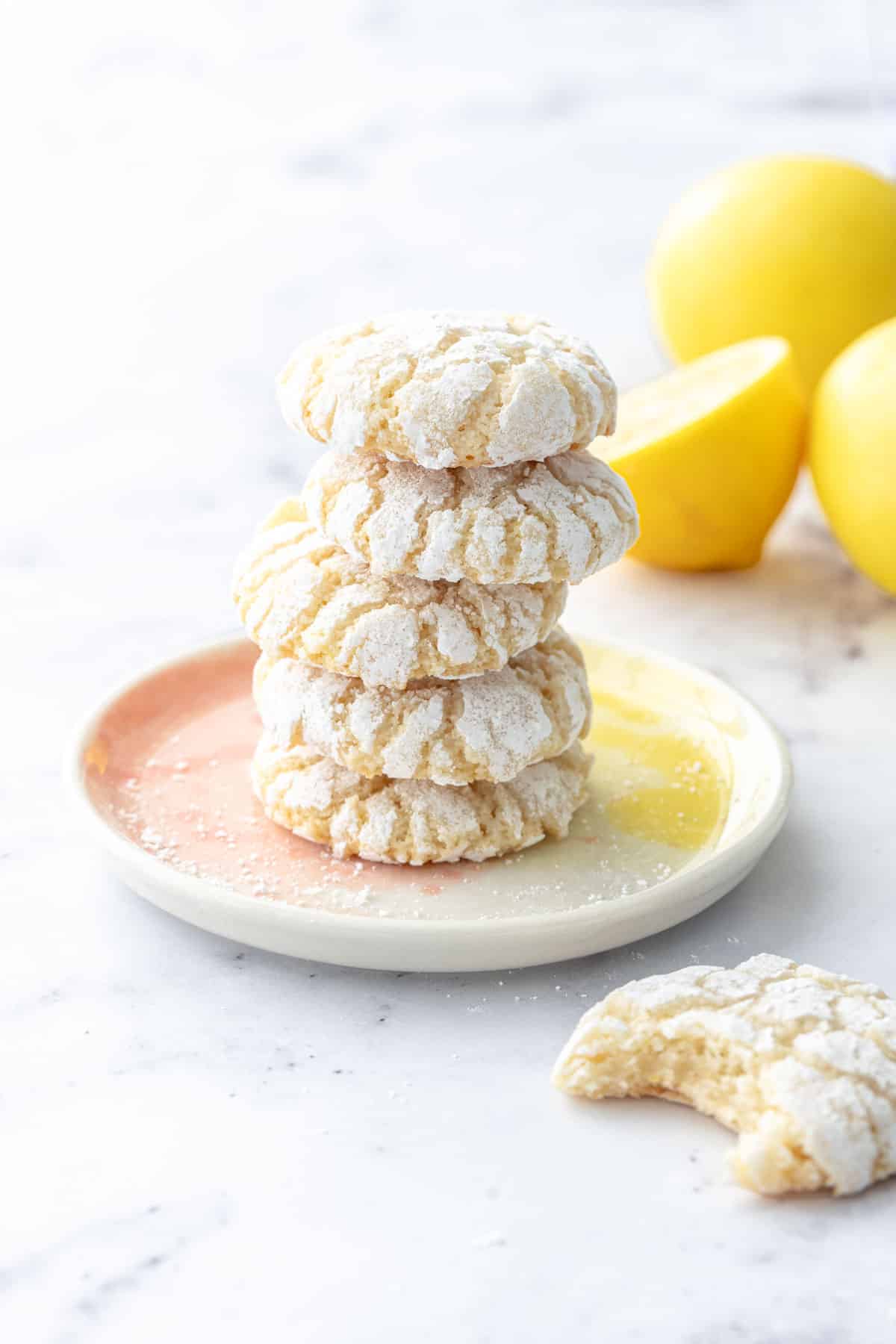

The result is cookies that are similar, but not identical to, the soft amaretti cookies. Their appearance is different (as you can tell), but the texture is slightly different too: the insides are chewier and not quite as soft and marzipan-like (but marzipan-lovers rejoice, there is still plenty of almond flavor here!)
It’s still miraculous to me that such a delicate, fancy-looking cookie can come from such a simple combination of ingredients. Just egg whites, almond flour, and sugar, with a touch of salt, lemon, and leavening.


And I know I talk about how these are gluten-free, which they are, but you’re not sacrificing anything by that fact. And that’s coming from someone who will side-eye most gluten-free treats and opt for the gluten-full versions instead (no shade for those adhering to such a diet nor the recipe developers that write those kind of recipes—I tip my hat to you because I am not made for such a challenge).
But these. I will choose these cookies each and every time, regardless of their gluten content. It’s like rather than trying to adapt something you love to be gluten-free, these just are that way inherently, with no sacrifices or modifications or gluten-free flour blends necessary.
It’s just almond flour, which isn’t an ingredient you can swap 1:1 for regular flour in most recipes anyway. And here we’re not swapping, rather using the almond flour with intention, combined with sugar and egg whites to produce something that is nothing short of magical.
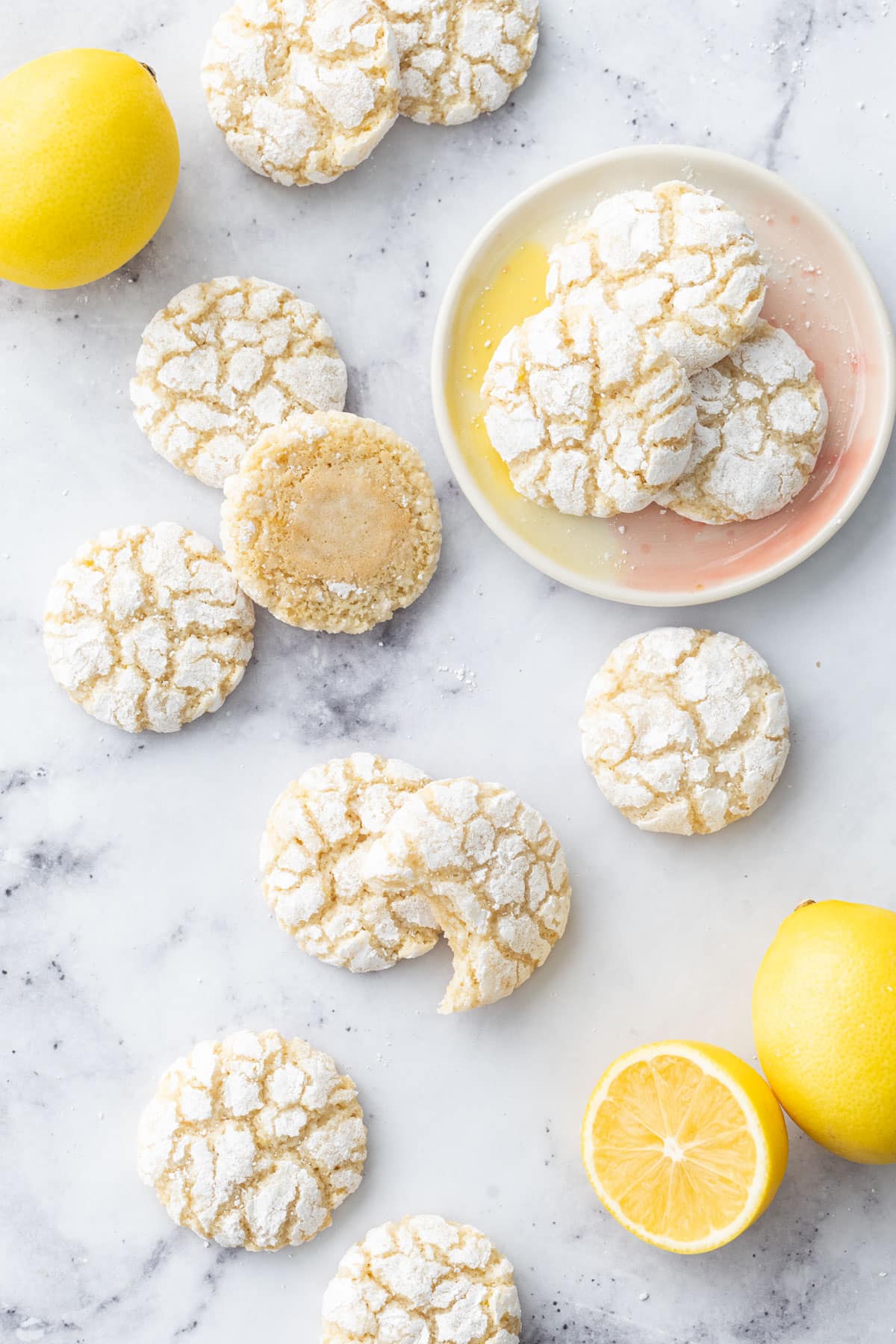

While I opted for lemon juice and lemon zest (lemon being a perfect compliment to fragrant almond), you could also use orange zest/juice here as well (I actually tested both flavor variations and both were equally lovely even though I opted for the lemon in the final batch). Or, if you don’t want an obviously citrusy flavor, just skip the zest (the juice is more to provide acid to react with the leavening, but only adds a bare hint of flavor to the final cookies).
Speaking of lemons, my preference is for Meyer lemons (I like the softer, sweeter flavor compared to conventional lemons), but you can use either in this recipe.
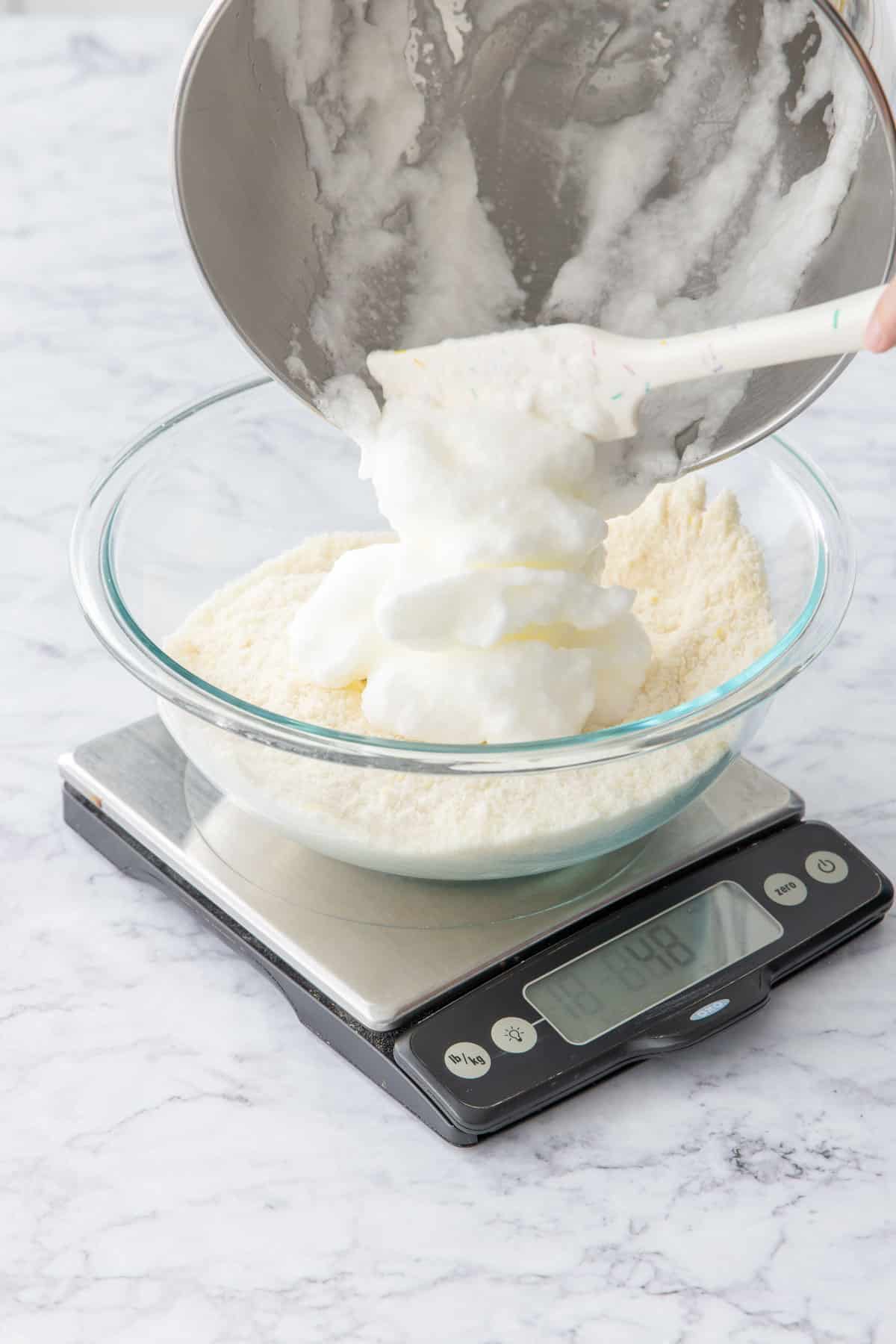

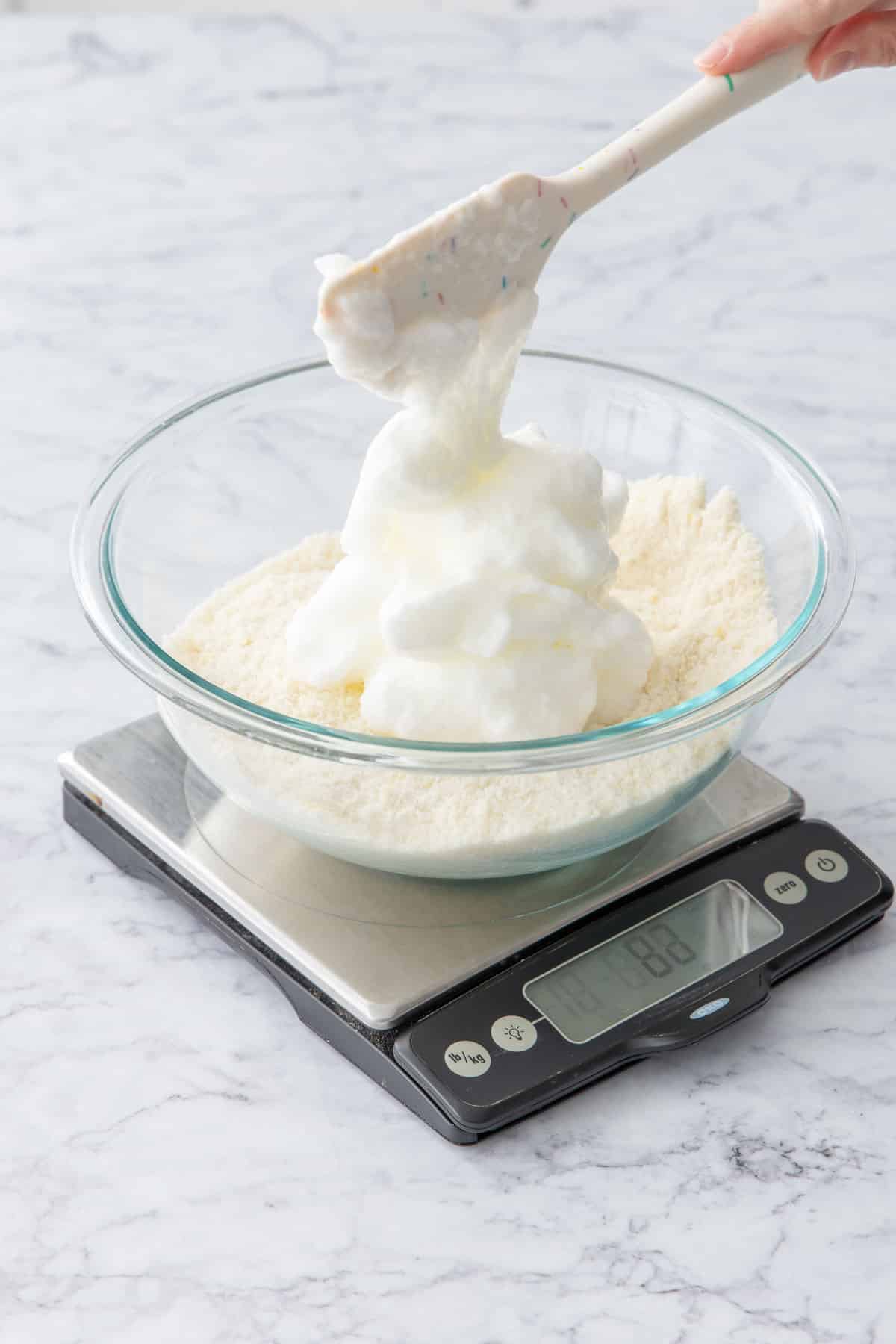

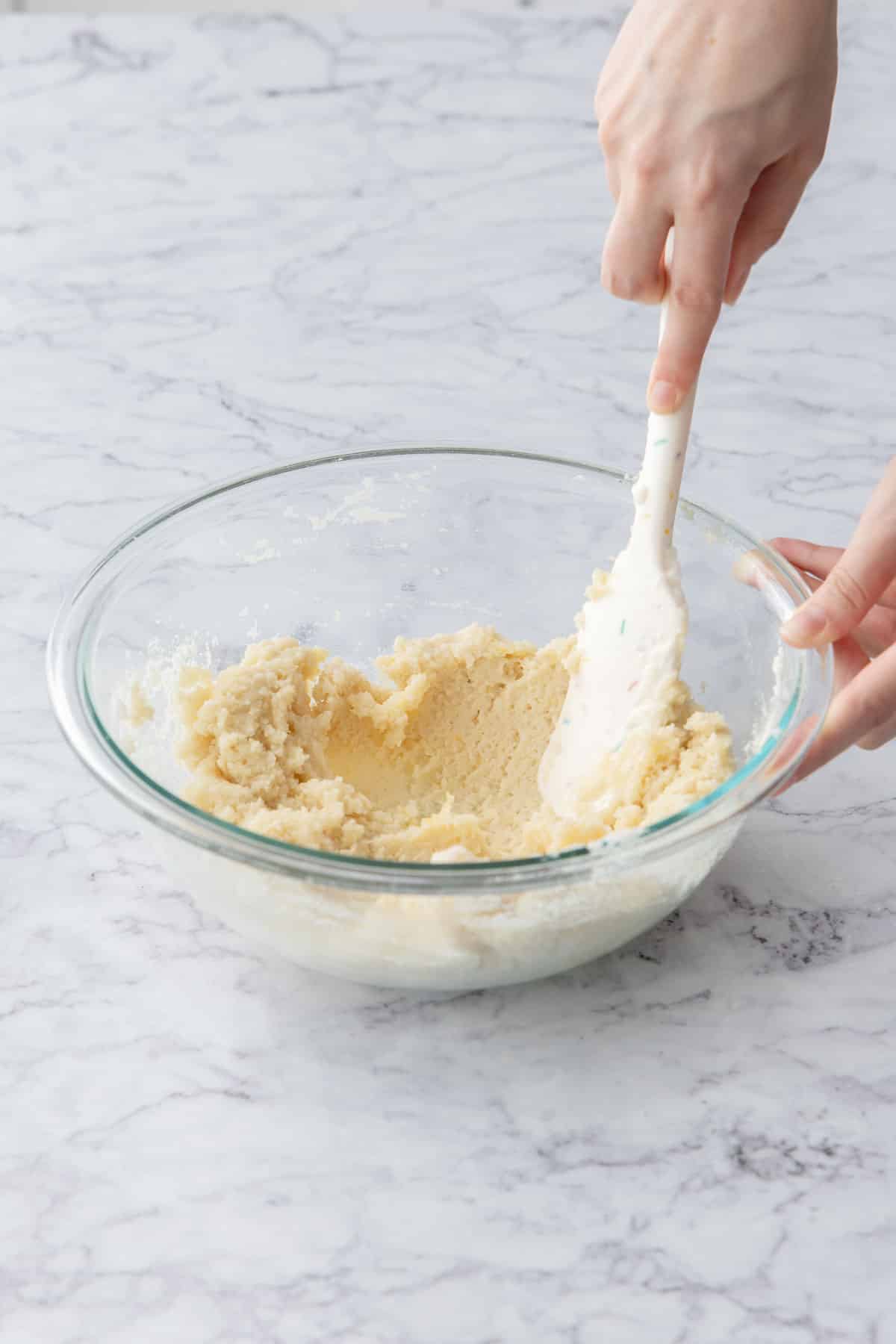

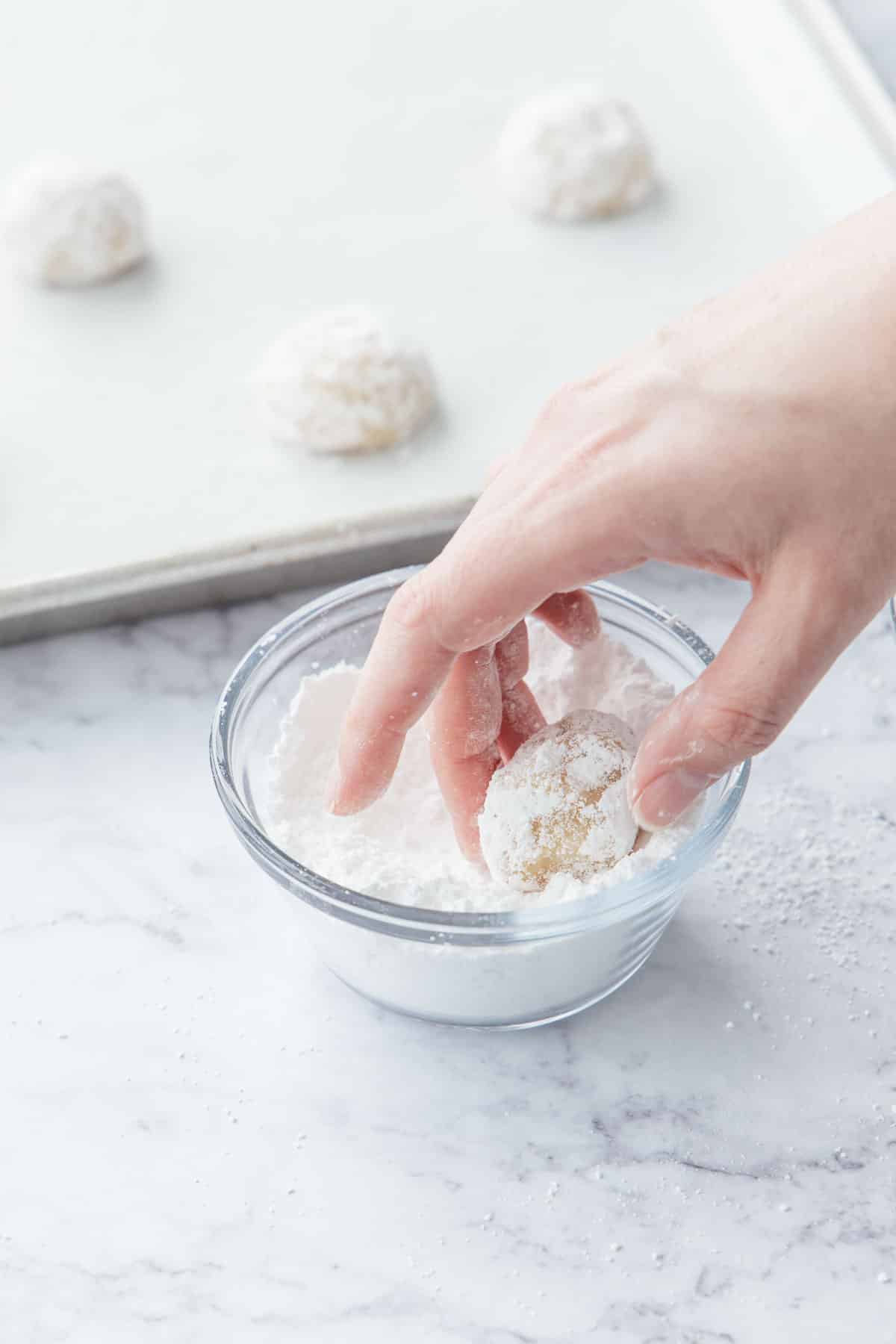

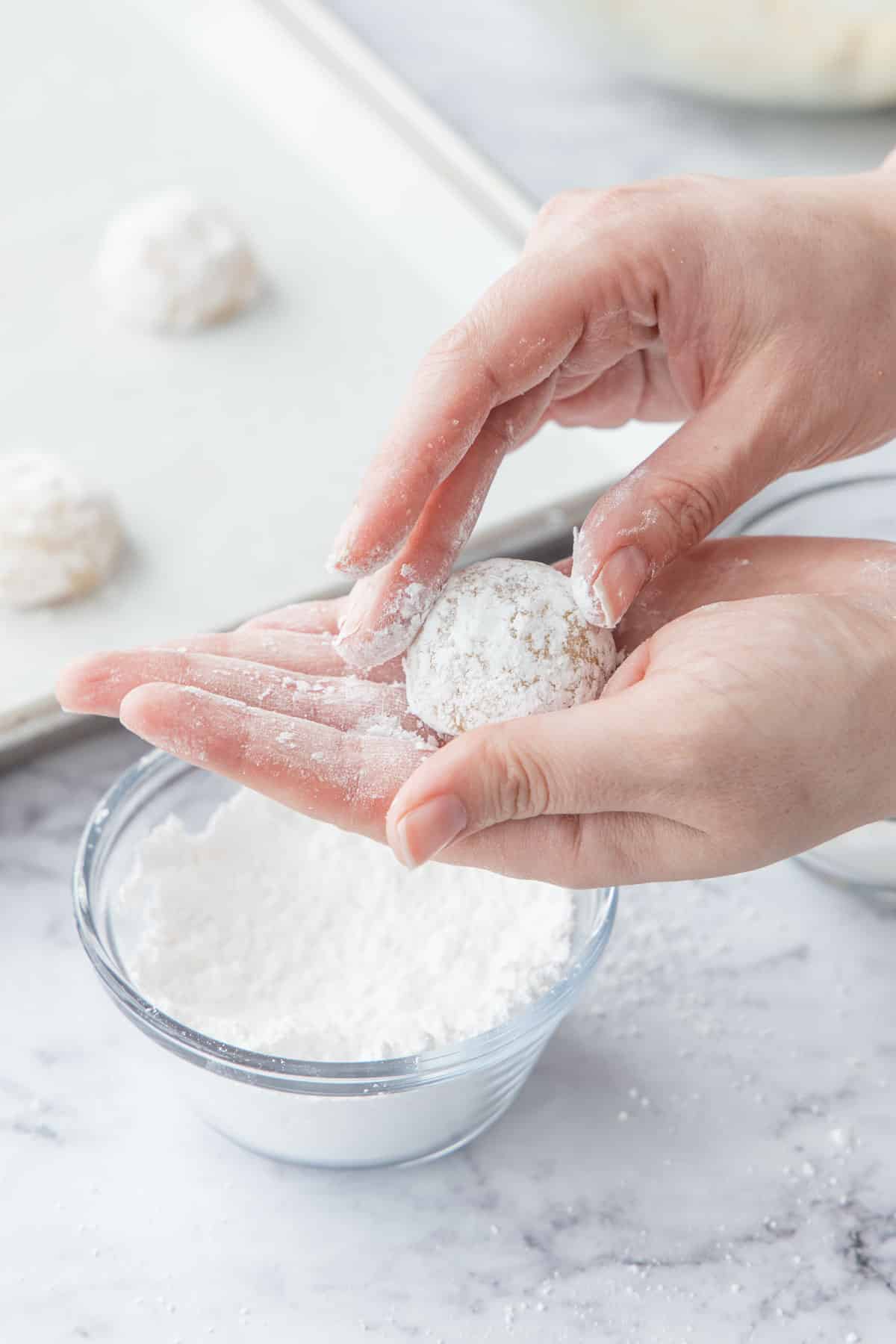

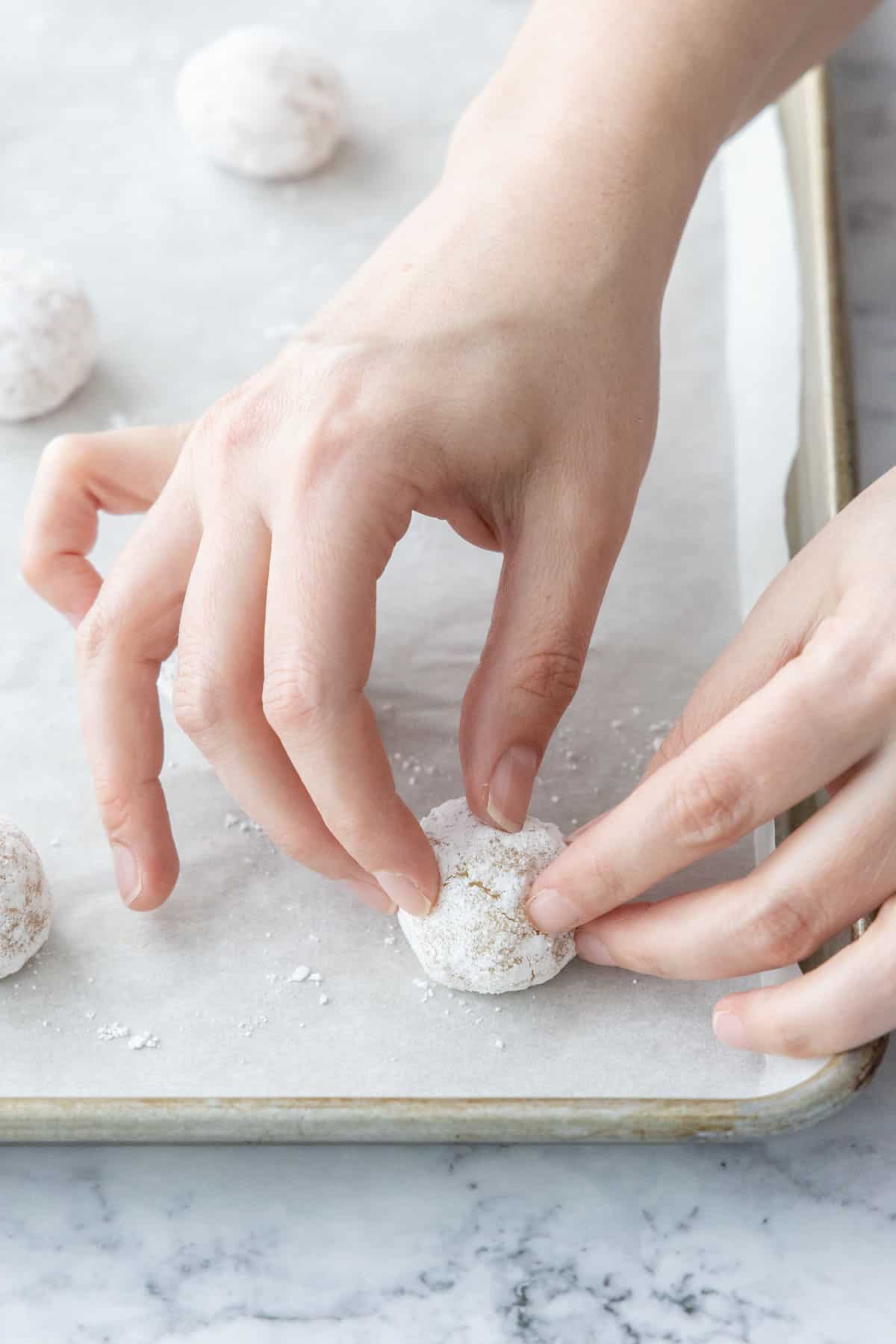

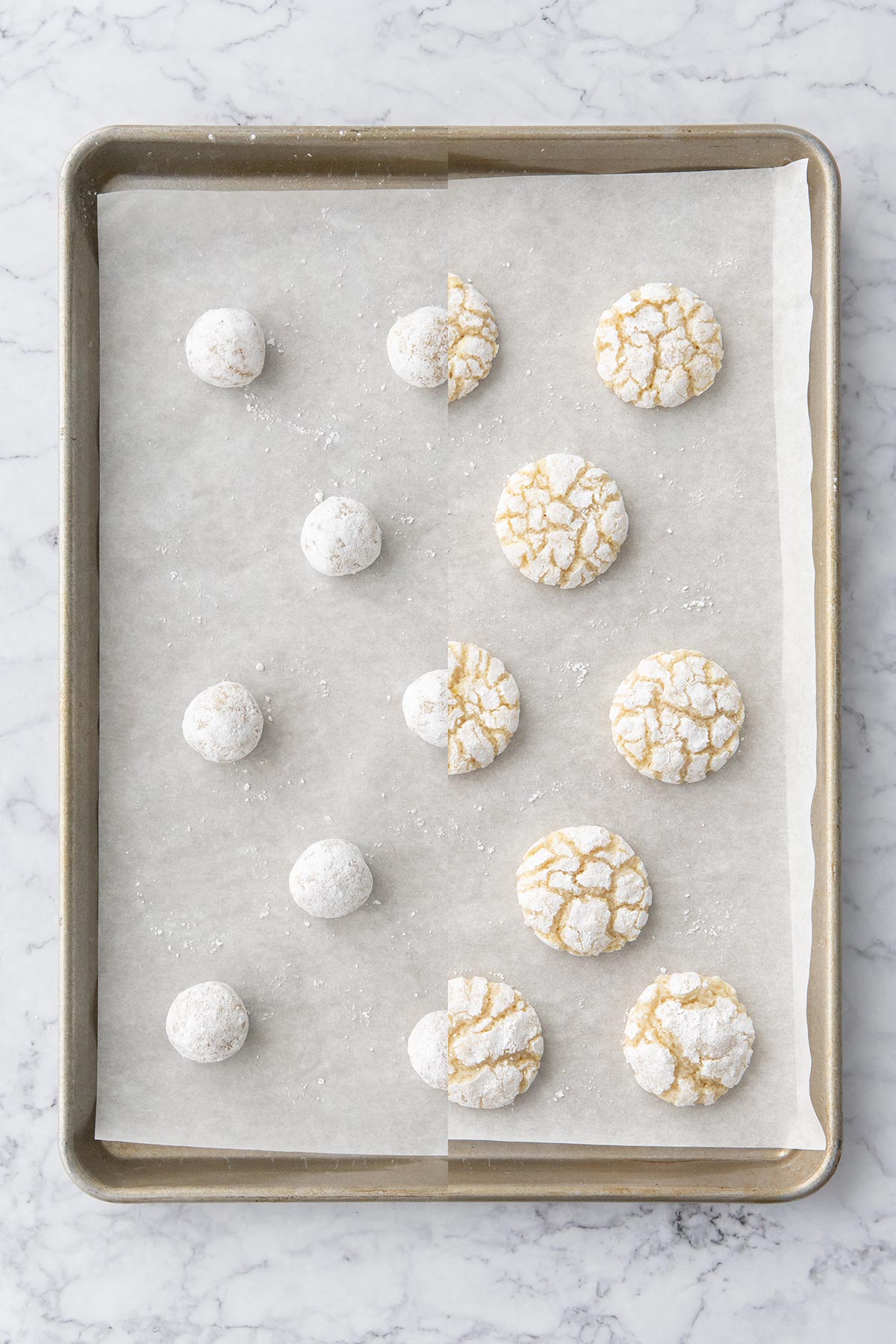

Crackalackin.
One trick I learned when testing these cookies is that they look better—with more numerous, fine cracks vs a few large fissures—if they are ‘encouraged’ to crack before they are even baked.
How do you encourage a cookie to crack, you ask?
Well, I’ll tell you. First, you let the sugar-coated dough balls rest for 10 to 15 minutes to let the outer surface dry out. Then, using your fingertips, lightly pinch and squeeze the balls to form baby cracks in the surface, to give the big cracks a head start when the cookies bake. You’re not messing up the nice round ball shape (don’t squeeze that hard), rather just ‘dimpling’ the outer surface of the dough with the very tips of your fingers. This crinkle-coaxing technique will give your final cookies more numerous, finer cracks which I think gives them a nicer appearance.


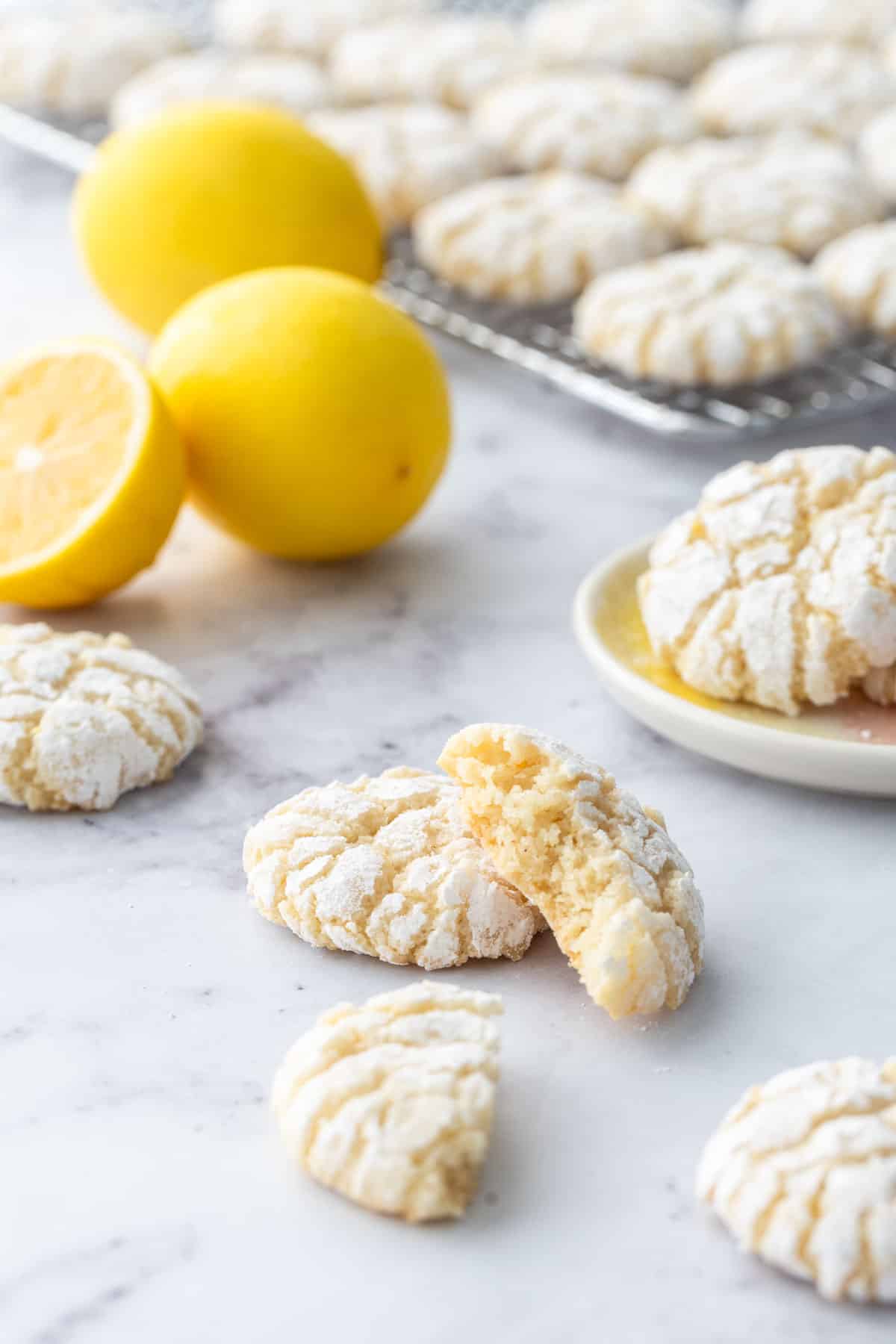





Spread the love.
Like most cookies, the amount of spread you achieve depends on a few factors. And because these particular cookies are particularly sensitive, I’d recommend baking off a couple test cookies before you bake the bulk of the batch. Depending on how those test cookies spread, you can adjust the dough as necessary and then bake the rest.
Want more spread? If your cookies stay more ball-shaped (like the original amaretti) and don’t really spread or crack much, try adding another 1/2-1 teaspoon lemon juice, or a bit more baking soda (1/8-1/4 teaspoon), both of which will encourage more spread in the cookies.
Also, just in case you decided that less sugar would be a good idea, know that reducing the sugar in this recipe will result in less spread and less defined crackles. So I don’t recommend adjusting the sugar for that reason.
Want less spread? If you find your cookies spread a bit too much for your liking, knead in a few tablespoons of almond flour which should counteract the excess moisture in the dough (I’ve noticed different almond flours have different characteristics, homemade almond flour for example is generally not as fine and less dry than store-bought and will result in more spread than a drier bag of store-bought almond flour.)
The cookie cutter trick also helps with over-spread cookies: just swirl a round cookie cutter or mason jar lid around the cookies immediately after they come out of the oven. This will ‘tuck in’ the uneven, spread out edges and make perfectly formed, perfectly round cookies.
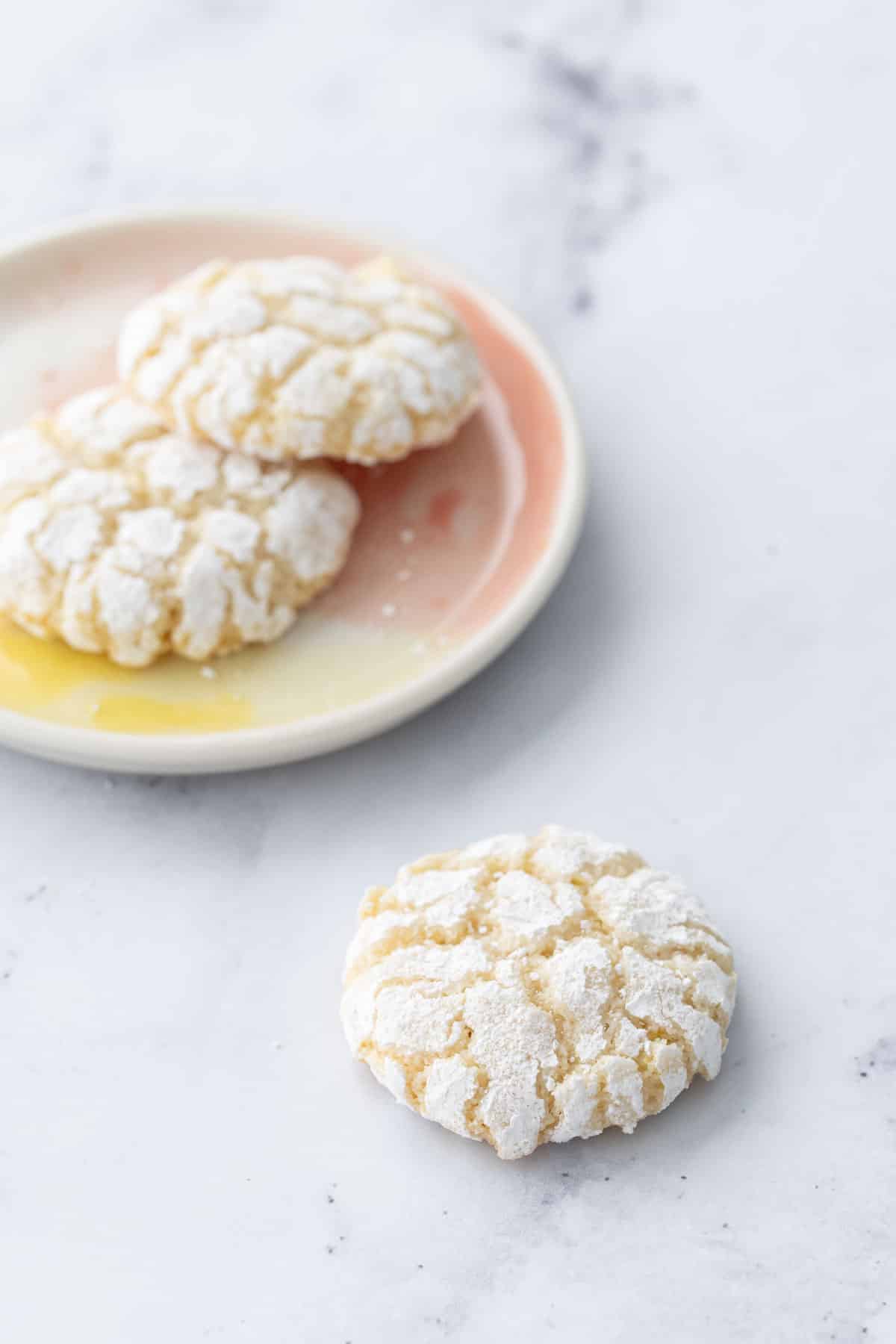

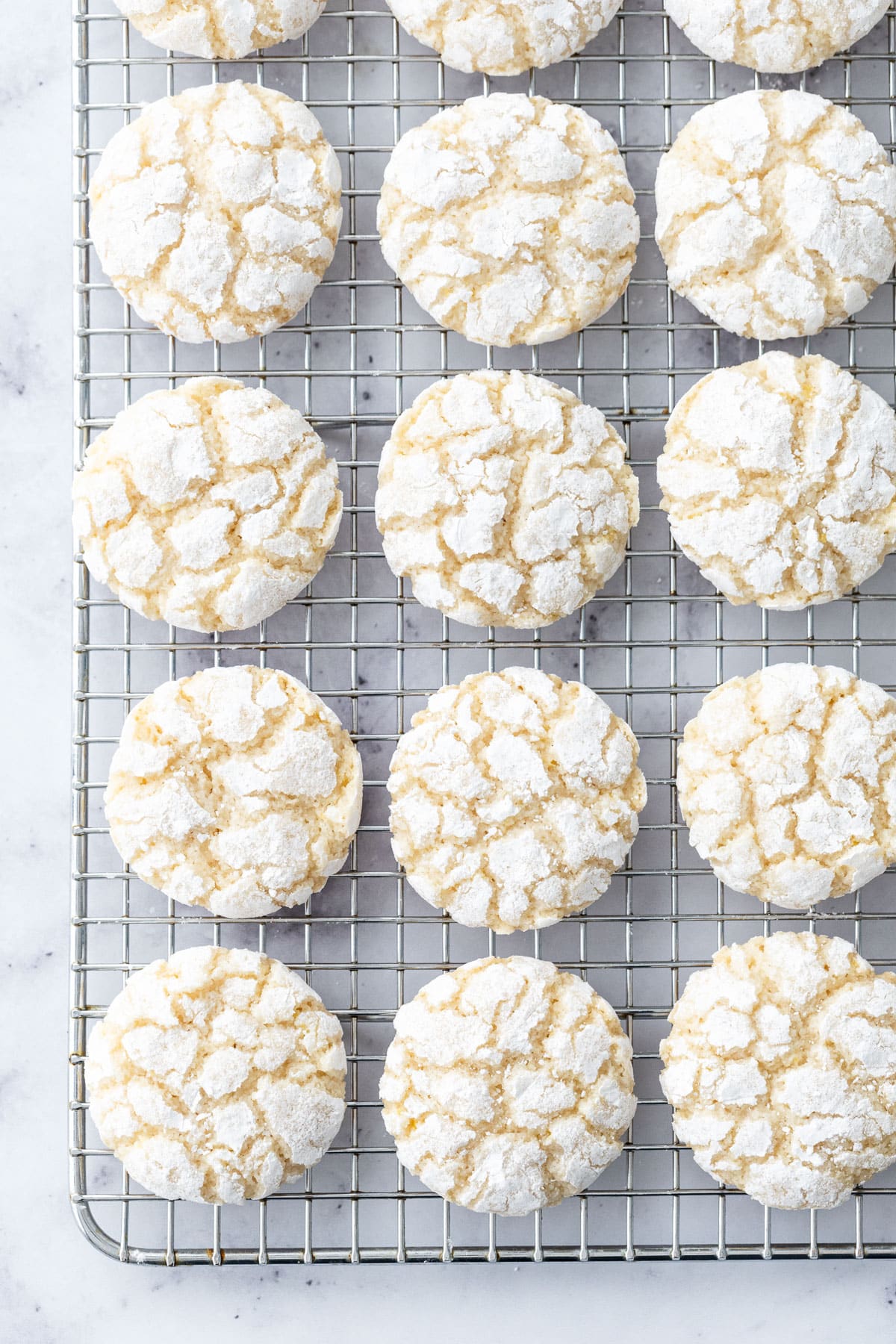

Ingredient Notes & Substitutions
Almond flour: You want a superfine, blanched almond flour for this recipe (using almond meal made with unblanched almonds will result in a coarser texture/appearance). I made these with both a homemade almond flour and a store-bought (Costco brand), and the homemade stuff made the cookies spread out a little more due to the coarser texture. See “Spread the Love” above if you want your cookies to spread more or less and adjustments to make accordingly.
Lemon: I used Meyer lemons as I prefer the sweeter, softer lemon flavor, but conventional lemons work fine too. You can omit the lemon zest if you prefer less lemon flavor (the juice won’t impart very much flavor at all). You can also replace the lemon zest/juice with orange if you like!
Egg white: The egg whites provide the primary structure for these cookies. I recommend fresh egg whites, but you can use carton egg whites too as long as they still whip up to medium-soft peaks.
Note the recipe calls for 3 medium or 2 extra large egg whites (75g by weight), which is a little odd, I know, but these crinkle cookies need a *little* bit extra moisture compared to the original cookies. Since eggs can vary quite a bit in size, so I recommend whipping 3 of whatever size you have, then weighing out 75g of egg white into the bowl with your almond flour. This will ensure you get exactly the right amount!
While this recipe does work with aquafaba for an egg-free version (see my Vegan Amaretti Cookies for more info), you’d need to play with the proportions to achieve the desired amount of spread.
Sugar: The sugar does more than just sweeten these cookies, it also affects the texture and the spread, and reducing it will result in harder cookies that stay ball-shaped and don’t crack as much (so I don’t recommend reducing or replacing it). Note the unusual amount of sugar, it’s a little less than a full cup (so I recommend weighing it if possible for the most accurate results).
The second rolling in powdered sugar is for appearance only and can be skipped if you prefer (but crinkle cookies really need that coating of powdered sugar to make the cracks stand out!)
Chewy Lemon Almond Crinkle Cookies
These chewy, lemon and almond-scented cookies are made with little more than almond flour, egg whites and sugar, meaning they are naturally gluten-free!
Prevent your screen from going dark
-
Preheat oven to 300 degrees F. Line a light or medium colored, heavy weight cookie sheet with parchment paper or a silicone baking mat.
-
In a large bowl, rub lemon zest into sugar with your fingers until fragrant. Whisk in sifted almond flour, baking powder, baking soda and salt until evenly incorporated.
-
In a mixing bowl or the bowl of a stand mixer fitted with the whisk attachment, whisk egg whites until they hold soft peaks.
-
Add beaten egg whites along with lemon juice and almond extract to dry ingredients and stir until mixture forms a soft, sticky dough.
-
Lightly dust your hands with powdered sugar. Use a small cookie scoop to portion dough into 1-inch balls. Roll into a smooth ball, then roll in granulated sugar, followed by powdered sugar. Arrange on prepared baking sheet, leaving 1-2 inches of space between cookies to allow for spreading.
-
Let sit at room temperature for 10 to 15 minutes to dry out slightly, then very gently squeeze and pinch around the dough balls using your finger tips (like you’re giving the ball tiny divots like a golf ball, without distorting the round shape of the ball itself), this will encourage more fine cracks as the cookies bake.
-
Bake for 22 to 25 minutes until tops are cracked and bottoms are just barely golden. If you prefer crunchier cookies you can give them an extra couple minutes. Remove from oven; let cool slightly, then transfer to wire racks to cool completely.
-
Cookies will keep at room temperature in an airtight bag or container, for up to 5 days.
All images and text © for Love & Olive Oil.
There may be affiliate links in this post. We are a participant in the Amazon Services LLC Associates Program, an affiliate advertising program designed to provide a means for us to earn fees by linking to Amazon.com and affiliated sites.

